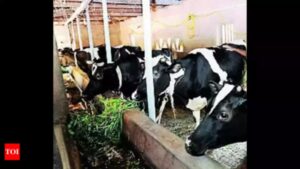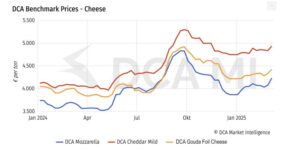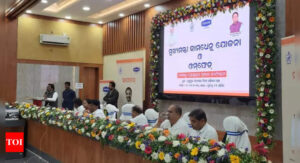The Ministry of Fisheries, Animal Husbandry & Dairying has released the latest report titled ‘Basic Animal Husbandry Statistics’ following an integrated sample survey, revealing positive growth in milk, eggs, and meat production in the country.
Union Minister Parshottam Rupala, who unveiled the report on Wednesday, emphasized the increasing significance of the livestock sector in the agricultural domain, highlighting its contribution to the country’s economy.
According to the report, India maintained its position as the world’s largest milk producer, with a total production of 221.06 million tonnes in 2022. This figure represents a 5.29% increase compared to the previous year. The report also indicated a per capita availability of 444 grams of milk per day.
The survey highlighted a 6.16% increase in milk production from exotic/crossbred cattle and a 6.13% increase from indigenous or non-descript cattle, compared to the previous year. Buffalo milk production also experienced a 4.44% increase in 2022, with indigenous buffaloes accounting for 31.58% of the total production and crossbred cattle contributing 29.91%. The report revealed that indigenous cattle accounted for 10.35% of the total milk production, non-descript cattle contributed 9.82%, and non-descript buffaloes contributed 13.49%.
Goat milk constituted 2.93% of the total milk production across the country, while milk from exotic cows represented 1.92% of the total production. The top five states contributing to milk production were Rajasthan (15.05%), Uttar Pradesh (14.93%), Madhya Pradesh (8.60%), Gujarat (7.56%), and Andhra Pradesh (6.97%), collectively accounting for 53.11% of the total milk production in the country. In the year 2020-21, milk production reached 209.96 million tonnes.
The total egg production in the country amounted to 129.60 billion eggs, reflecting a 6.19% increase compared to the previous year. The per capita availability of eggs was 95 eggs per year. The top five egg-producing states were Andhra Pradesh (20.41%), Tamil Nadu (16.08%), Telangana (12.86%), West Bengal (8.84%), and Karnataka (6.38%), contributing 64.56% of the total egg production in the country.
Meat production in the country reached 9.29 million tonnes, indicating a 5.62% increase from the previous year. Poultry meat production accounted for 4.78 million tonnes, constituting approximately 51.44% of the total production. Poultry meat production witnessed a growth rate of 6.86% compared to the previous year. The top five meat-producing states were Maharashtra (12.25%), Uttar Pradesh (12.14%), West Bengal (11.63%), Andhra Pradesh (11.04%), and Telangana (10.82%), collectively contributing 57.86% of the total meat production in the country.
Poultry accounted for 51.44% of the meat production, while buffalo, goat, sheep, pig, and cattle contributed approximately 17.49%, 13.63%, 10.33%, 3.93%, and 3.18%, respectively, to the total meat production in the country.
Ranpal Dhanda, President of the Poultry Federation of India, noted that an increasing number of people are turning to eggs and chicken as their primary sources of protein. He emphasized that a rise in per capita egg and meat consumption would create numerous employment opportunities in the country, highlighting that the current consumption rates of eggs and chicken in India remain lower than those in developed countries.
The survey also revealed a decline in wool production, with a total of 33.13 thousand tonnes during 2021-22, representing a decrease of 10.30% compared to the previous year.






